The Azores boasts hundreds of miles of rocky volcanic coastline, which means there are lots of Azores beaches to choose from! Whether you want to swim, surf or simply relax under an umbrella and listen to the waves, you’re sure to find your ideal beach on one of the nine different islands.
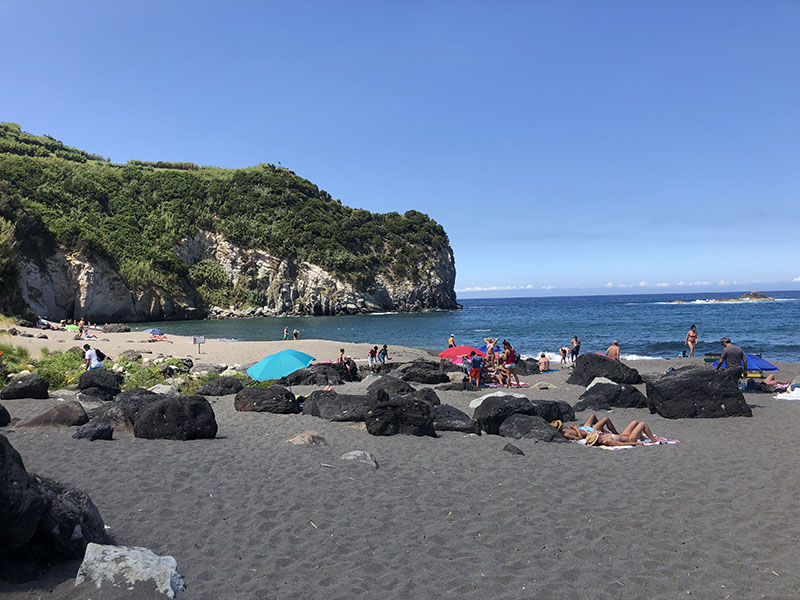
Last year, 39 Azores beaches were given Blue Flag status, meaning they have excellent facilities and superb water quality. The majority have lifeguards, beach umbrellas, toilets and parking nearby (although the more out-of-way beaches don’t). Most Azores beaches have volcanic black or red sand — but you can find a golden sand beach if you know where to look. Keep reading for the best beaches in Azores we think you should visit! 👍
AZORES BEACHES: EAST ISLANDS
SÃO MIGUEL
The most visited of the Azores islands, São Miguel has a variety of beaches to suit everyone from families to surfers and hikers. One of the most popular is Praia do São Roque, a ten-minute drive east of the capital Ponta Delgada. It’s a pretty beach in a sheltered bay, with cafes and restaurants lining the nearby beach road.
Heading eastwards, the town of Agua De Alto has a long sandy beach, easily accessible from the road, with a beach bar and restaurant overlooking the ocean. Further east still, on the edge of Ribeira Quente is Praia do Fogo, a lovely beach in a horseshoe-shaped bay backed by high cliffs, where the water is heated by thermal hot springs.
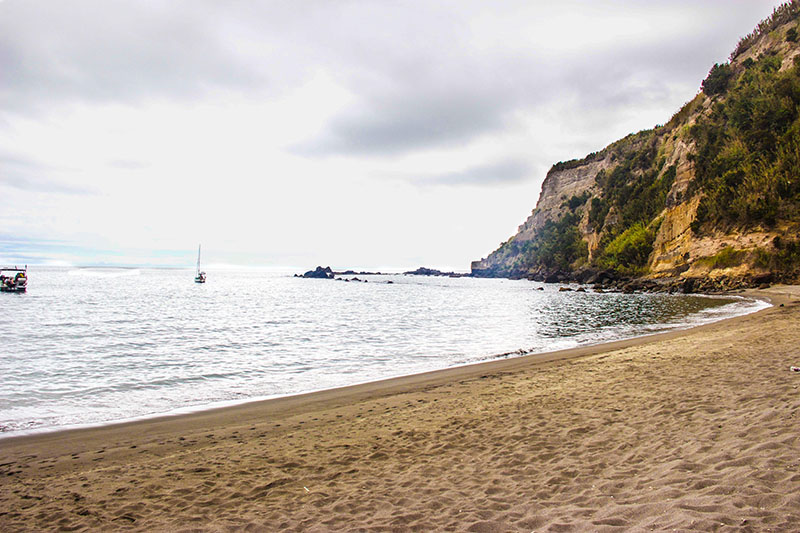
São Miguel is the most popular Azores island for surfing. If you’re keen to give it a try, there are several places to go. Praia de Santa Bárbara, is a long stretch of sand on the north coast near Ribeira Grande. Blessed with powerful swell, it’s one of the best spots for surfing and bodyboarding on the island. There’s a handful of surf schools and surf shops nearby where you can take lessons and rent boards.
On the south coast, Praia do Pópulo is a Blue Flag beach popular with locals, with surf schools and a surf shop nearby. More experienced surfers can head to Santa Iria a bay east of Ribeirinha on the North Coast only accessible on foot.
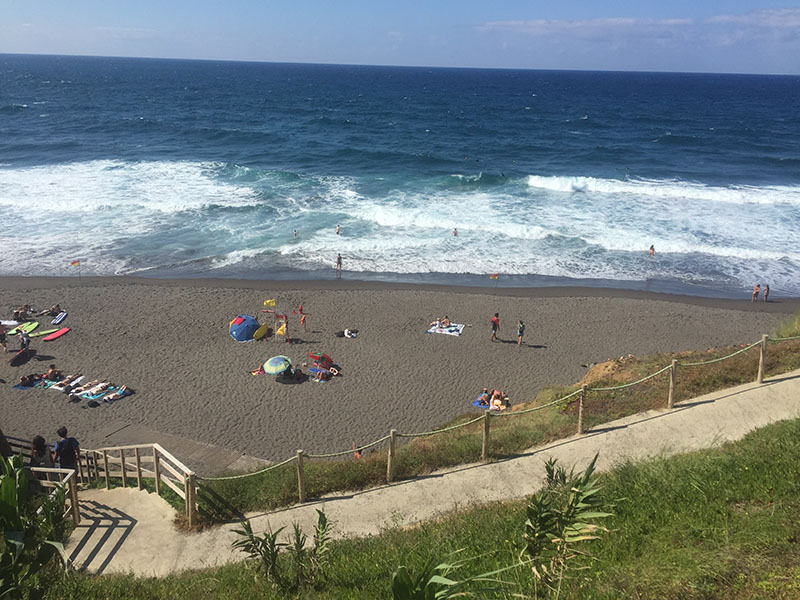
Many of São Miguel’s beaches are suitable for families with children. Around a ten-minute drive from Ponta Delgada is Praia das Milícias. Accessible via a walkway, the sand slopes gently to the sea, making it good for swimming.
Further east near the town of Vila Franca do Campo, Praia da Vinha da Areia has the added benefit of a small water park, should the sea be too rough for swimming. In the town of Povoacao Praia da Povoação is a rocky beach which boasts an outdoor swimming pool, children’s playground, and snack bar.
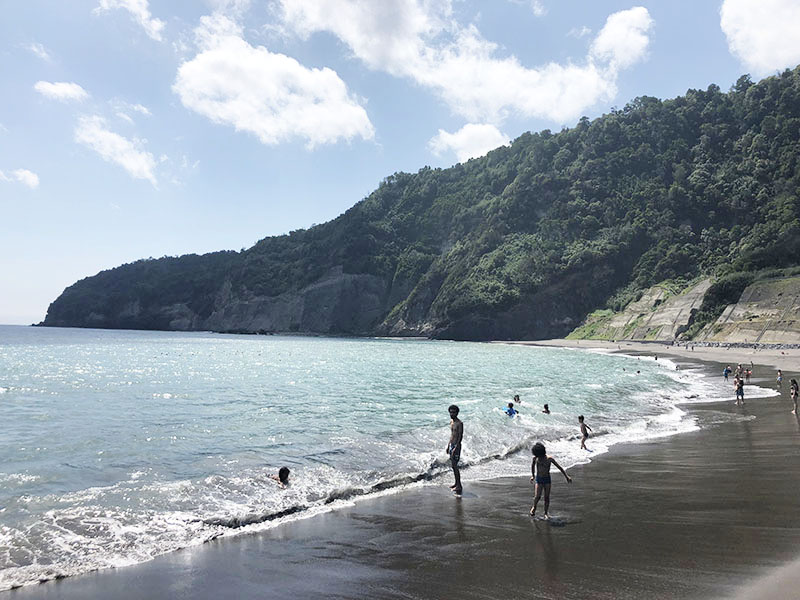
While many Azores beaches are easy to get to, you can also find some which are more private and out-of-the-way. On the North coast, Viola Beach is rugged and beautiful, with high sea cliffs, and a waterfall falling into the sea. Accessed on foot, the closest facilities are in the nearby town of Maia. Also on the north coast, Praia dos Moinhos is a lovely beach set between two rocky peninsulas, with a popular café with outdoor seating.
Over on the east coast, Praia do Lombo Gordo is a long way down a steep single track road, but you’ll be rewarded by breathtaking scenery — and no crowds. Easier to get to, Mosteiros Beach on the west coast has dramatic rock formations in the sea and is a popular place to watch the sunset.
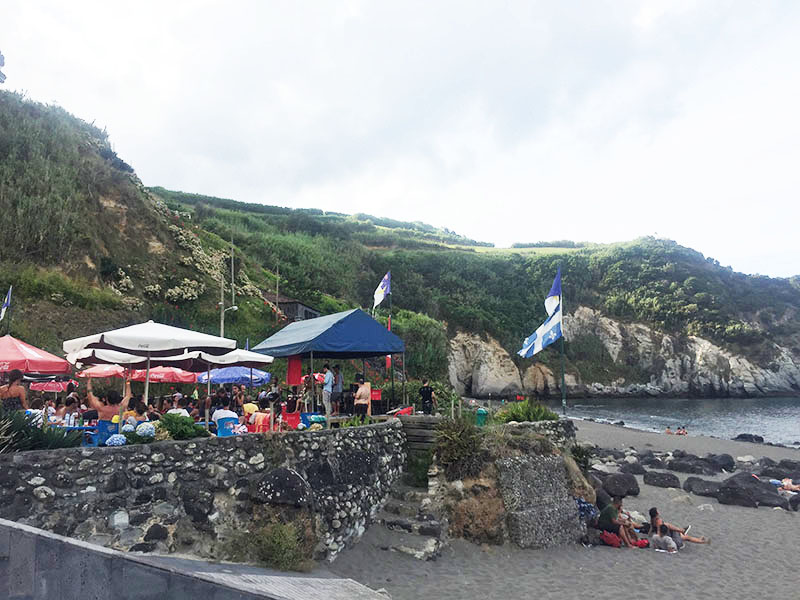
Feeling inspired? We have a host of resources to help you plan your trip to São Miguel. Download the Travel Honey Sao Miguel 7 day itinerary, or check out the Travel Honey Ultimate Guide to Where to Stay in Sao Miguel.
SANTA MARIA
Next door to San Miguel, the island of Santa Maria gets the most sun making it a good choice if you fancy spending some time on the beach. While most Azores beaches have black volcanic sand, unusually, Santa Maria is blessed with a golden sand beach, Praia Formosa.
Outside Vila do Porto on the south coast, it has shallow water good for swimming and facilities including toilets, showers, and a snack bar and restaurant. Between May and September, you can take a ferry between São Miguel and Santa Maria — a journey of three hours.
AZORES BEACHES: CENTRAL ISLANDS
PICO
Of the central group of Azores islands, Pico is the largest. While most of this island’s coast is rocky, there is one sandy beach, Praia do Canto da Areia, on the northeast coast. A beautiful beach with rock pools at low tide, it has a small snack bar, showers and toilets. Pico also has many natural ocean swimming pools where you can take a dip. For more details, check out the Travel Honey Pico itinerary.
TERCEIRA
Outdoor lovers should head to Terceira, which has stunning natural landscapes, and an extinct volcano that can be explored. The island has two sandy beaches. On the east coast, the town of Praia da Vitória has a beach adjacent to the marina, with sun umbrellas, changing rooms and showers and close to several restaurants and bars. There’s also a small beach on the south coast in Angra do Heroísmo, which is a UNESCO World Heritage site.
FAIAL
Faial is another island of great natural beauty and a hiker’s dream. There are two sandy beaches; Praia do Porto Pim is a sheltered beach close to the picturesque town of Horta, in at the south east corner of the island. The beach has safe shallow water, and several places to eat with sunset views. On the east coast, Praia do Almoxarife is another very pretty, slightly rockier beach close to a campsite and a couple of restaurants.
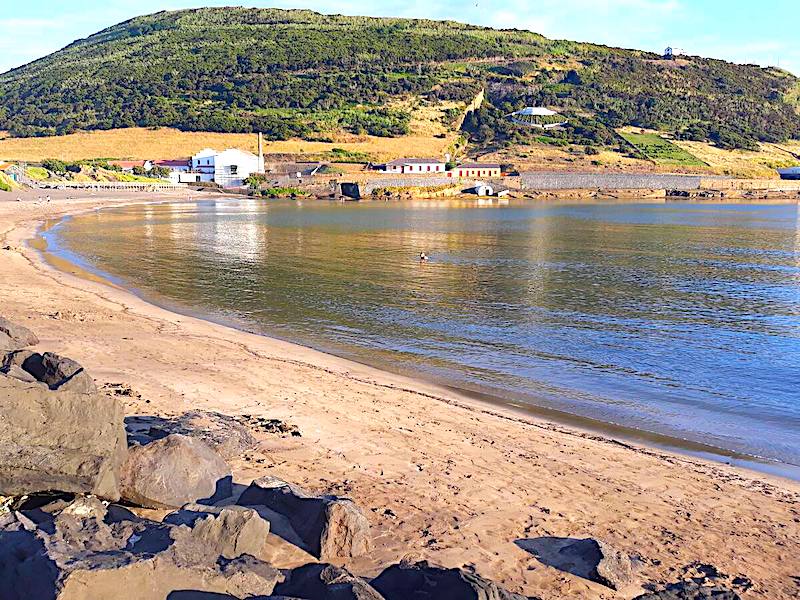
GRACIOSA
Graciosa is a tiny, unspoiled and mostly rural island. It is blessed with one sandy beach in the town of São Mateus (otherwise known as Praia ) on the east coast. The beach has shallow water for swimming, a restaurant with outdoor seating, sun umbrellas and sunbeds. Nearby is the extinct Caldeira da Ilha Graciosa and the Furna do Enxofre, a huge volcanic cave, which visitors can go inside.
SÃO JORGE
The island of São Jorge doesn’t have any beaches but there are a handful of places to swim, mainly around the towns of Calheta and Velas.
AZORES BEACHES: WEST ISLANDS
FLORES AND CORVO
The westernmost Azores islands of Flores and Corvo have some of the most untouched of all the Azores beaches. On Flores, Fajã Grande is reached from a variety of hikes, and is in a beautiful natural setting, with waterfalls cascading down cliffs. There are few facilities apart from a camping area, outdoor showers and a small café. Corvo has one sandy beach, Praia da Areia on the south coast, at the end of a hiking trail, which has shallow rock pools at low tide.
AZORES ISLANDS BEACH SAFETY
People say the Azores ‘isn’t a beach destination’ because of the strong Atlantic currents. But if you pay attention to the different safety flags, you shouldn’t have any problems entering the water at any Azores beaches. A red flag, for example, means no swimming; a yellow flag means swimming is discouraged. A purple flag warns of Portuguese Man O’War jellyfish. Here is a guide to all the flags.
Before you go, you should also check the weather, which can be quite changeable, even in summer. The Spot Azores website has set up webcam feeds on popular Azores beaches.
WHEN TO VISIT AZORES ISLANDS BEACHES
The year-round mild weather means you can enjoy the beauty of the Azores islands beaches at any time of year. But to make the most of them we recommend visiting in summer. The water is the ideal temperature for swimming, the sea is calm, and the most popular beaches have lifeguards on duty.
If you’re keen on hiking or photography however, you might want to travel in spring or autumn, when the beaches are less crowded. For more about traveling in the Azores check out Visiting the Azores FAQ or Which is the Best Azores Island to Visit.